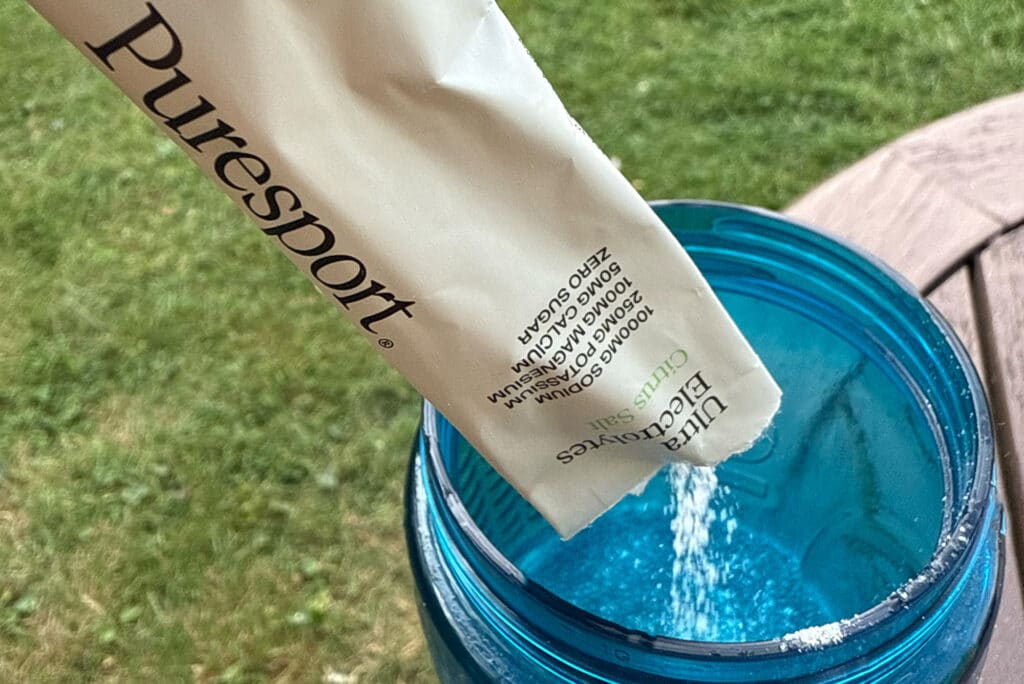
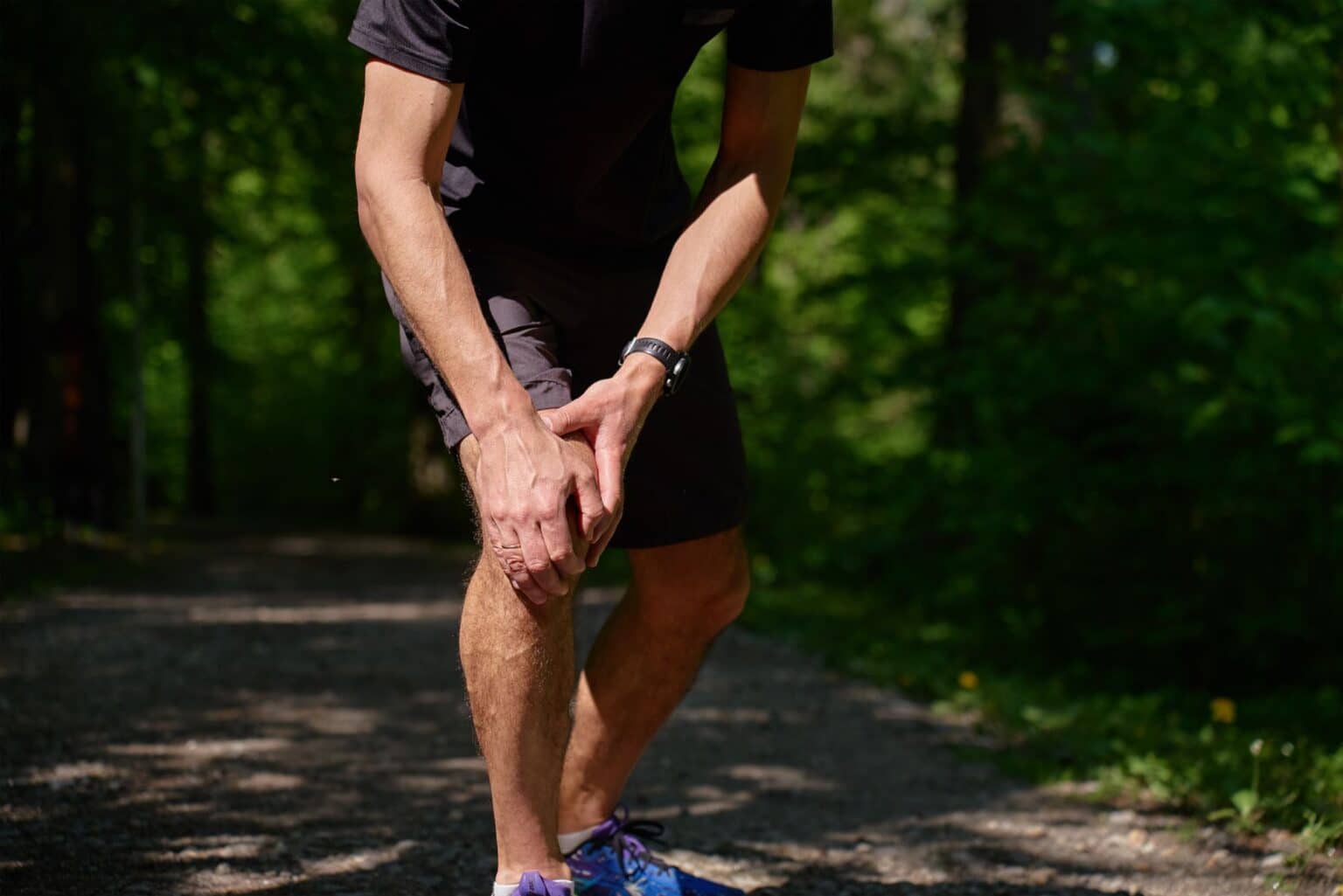
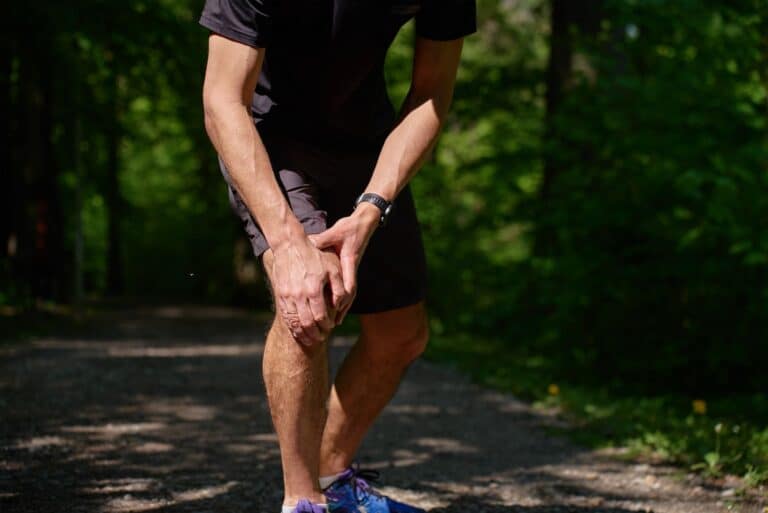
Are you struggling with IT band pain as a runner?
You’re not alone. This guide explains what IT band pain is, why it happens, and offers practical tips to relieve and prevent it.
Iliotibial Band Syndrome is more than a mere inconvenience for runners; it’s a condition that can significantly impact your performance and well-being. The IT band is vital in providing lateral support and stabilisation to the hip and knee. However, when this tendon becomes irritated or swollen due to repetitive compression against the femur, it leads to friction, inflammation, and pain. This condition, known as IT band syndrome, is a common overuse injury among athletes, particularly runners and cyclists, and is often diagnosed as iliotibial band syndrome.
The prevalence of IT band syndrome among runners ranges from 5% to 14%, making it a significant concern for those engaged in endurance sports. Women are particularly susceptible due to anatomical differences in their hips. Activities like long-distance running and cycling, which involve repetitive knee movements, are closely associated with this condition.
Understanding the function and the importance of the IT band is the first step in addressing the pain and preventing further injury.
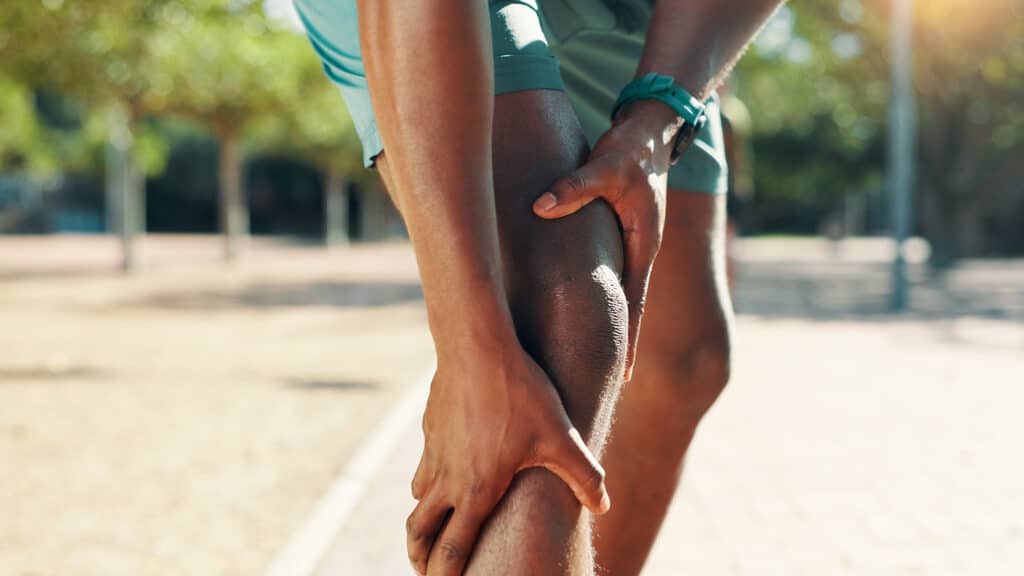
Several factors contribute to the development of IT band syndrome in runners. One of the primary causes is muscle imbalances, particularly weakness in the hip abductor muscles. These muscles are crucial for stabilising the hips and knees, and any weakness can alter joint alignment and mechanics, leading to increased strain on the IT band.
Repetitive motion involved in running exacerbates the condition, particularly when combined with poor biomechanics. Weak glute muscles, which play a significant role in stabilising the hips and knees, can irritate the IT band and contribute to the development of the syndrome.
Excessive hip adduction during running, often a result of weak hip abductors, further increases the risk of IT band syndrome. These imbalances can be corrected with targeted exercises, which are crucial for prevention and long-term relief.
The symptoms of IT band syndrome are often unmistakable, primarily characterised by a sharp pain on the outer side of the knee. This pain, which can range from a burning sensation to an aching discomfort, typically occurs during activities such as running or descending stairs. If you’ve ever felt a sudden, sharp pain on the outer knee during a run, you might be experiencing IT band syndrome, with the main symptom being that sharp pain.
As the condition progresses, the left knee pain becomes more pronounced, particularly after prolonged running or cycling sessions. The outer knee may also become sensitive to touch and show signs of swelling. In severe cases, the pain can escalate to the point where it affects everyday activities like walking or sitting. Specific triggers, such as running downhill or cycling for extended periods, can exacerbate the symptoms, especially if one bends the knee repeatedly and may feel pain.
It’s important to note that the pain associated with IT band syndrome can radiate down the leg, making it difficult to pinpoint the exact source. Symptoms like pain over the greater trochanteric bursitis or lateral epicondyle are indicative of IT band issues. Recognising these symptoms early on and taking appropriate action can prevent further complications and ensure a quicker recovery.
Diagnosing IT band syndrome involves a thorough assessment of symptoms and exercise history by a healthcare provider, such as a doctor or a physiotherapist. During the evaluation, physical tests are commonly used to determine the presence of IT band syndrome. These tests help identify the specific areas of pain and assess the flexibility and movement of the IT band.
In some cases, imaging tests like MRI or ultrasound may be used to confirm the diagnosis and rule out other potential injuries. Diagnostic ultrasound is considered the gold standard for diagnosing IT band syndrome, as it allows for a dynamic assessment of the structures, including any fluid-filled sac, and can be scanned during movement.
While an MRI is not always necessary, it can help provide a comprehensive view of the affected area. Accurate diagnosis is crucial for developing an effective treatment plan and ensuring a successful recovery.
Stretching is essential for managing IT band pain. Effective stretches can alleviate tightness and reduce tension, providing much-needed relief. Integrating these stretches into your routine can prevent worsening pain and improve overall flexibility.
Key stretches include the standing quad stretch, seated cross-over twist, and supine figure four, each targeting different muscle groups to provide comprehensive relief.
The standing quad stretch is a simple yet effective way to alleviate tightness in the quadriceps, which can reduce tension in the IT band. Begin by standing tall with your feet hip-width apart. Bend your right knee, bringing your heel towards your glutes, and grab your right ankle with your right hand, keeping your knees close together. Incorporating a standing iliotibial band stretch can further enhance flexibility, especially for the right quad.
To deepen the stretch, gently push your hips forward while keeping your chest upright. Adding this stretch to your routine can prevent IT band pain and enhance overall flexibility.
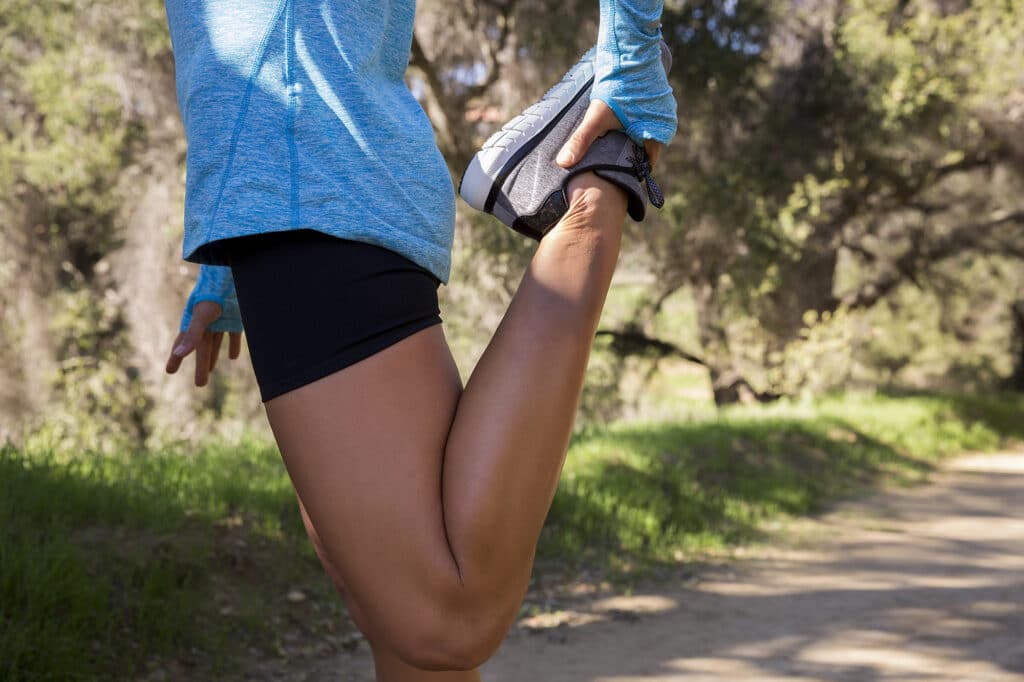
The seated cross-over twist is beneficial for targeting the glutes and tensor fascia latae (TFL). Sit on the floor with your legs straight, bend your right leg, and cross it over your left leg. Hold your right knee with your left arm and twist your torso to the right.
To deepen the stretch, stand with your feet together, cross the right leg behind the left, and fold your torso over until you feel a stretch along the right leg. This stretch helps alleviate tension in the right glute and TFL, providing relief from IT band pain.
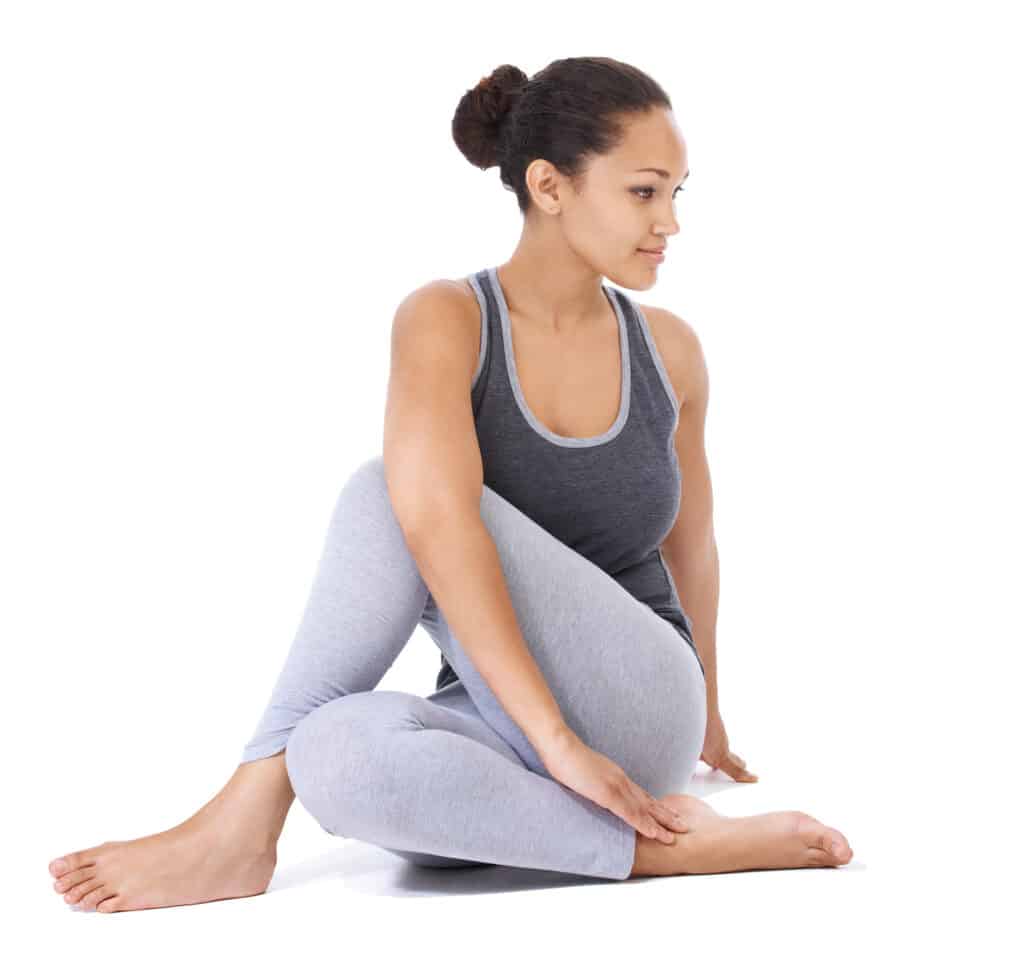
The supine figure four stretch is designed to alleviate tightness in the surrounding muscles, particularly the glutes and hip flexors, with your feet flat on the ground. To perform this stretch, lie on your back, cross one ankle over the opposite knee, and gently pull the uncrossed leg toward your chest.
This stretch helps improve flexibility in the hip area and reduces tension, directly contributing to relief from hip pain and IT band pain.
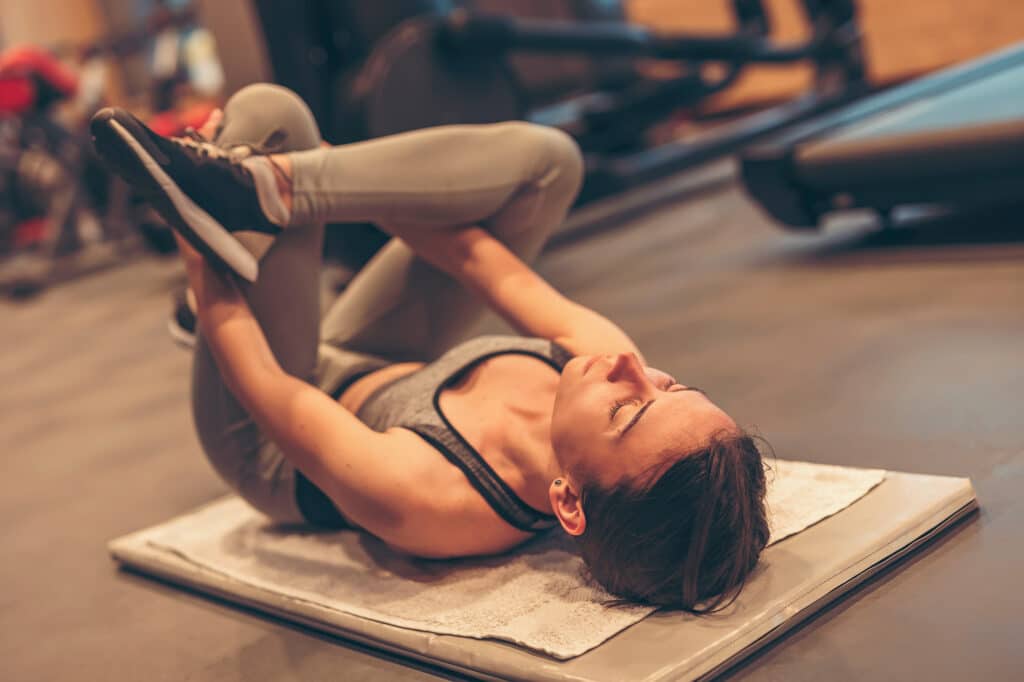
Strengthening exercises are crucial for long-term relief from IT band pain, as they help address muscle imbalances and improve biomechanics. Targeted exercises can strengthen the muscles supporting the IT band, reducing the risk of future pain.
Key exercises include hip abductor strengthening, step-ups, and walking lunges, each focusing on different hip muscles to provide comprehensive support.
Hip abductor strength is crucial for runners to maintain proper knee alignment and prevent pain. Weak hip abductors can lead to an increased risk of IT band syndrome due to poor biomechanics.
Exercises like side-lying leg lifts can effectively target and gently lift the leg muscles. To perform side-lying leg lifts, lie on your side with your legs stacked, lift the top leg while keeping it straight, and lower it back down in a controlled manner.
Including hip abductor strengthening exercises regularly can help prevent the recurrence of IT band pain.

Step-ups are an excellent exercise for enhancing glute engagement, which is essential for supporting the knee joint during running activities. To perform step-ups, find a stable platform, step up with one leg, and then bring the other leg up to meet it. Step back down and repeat with the other leg.
This exercise effectively engages the glute muscles, which play a crucial role in knee support during running. Step-ups can improve running efficiency and reduce injury risk by strengthening key muscles.
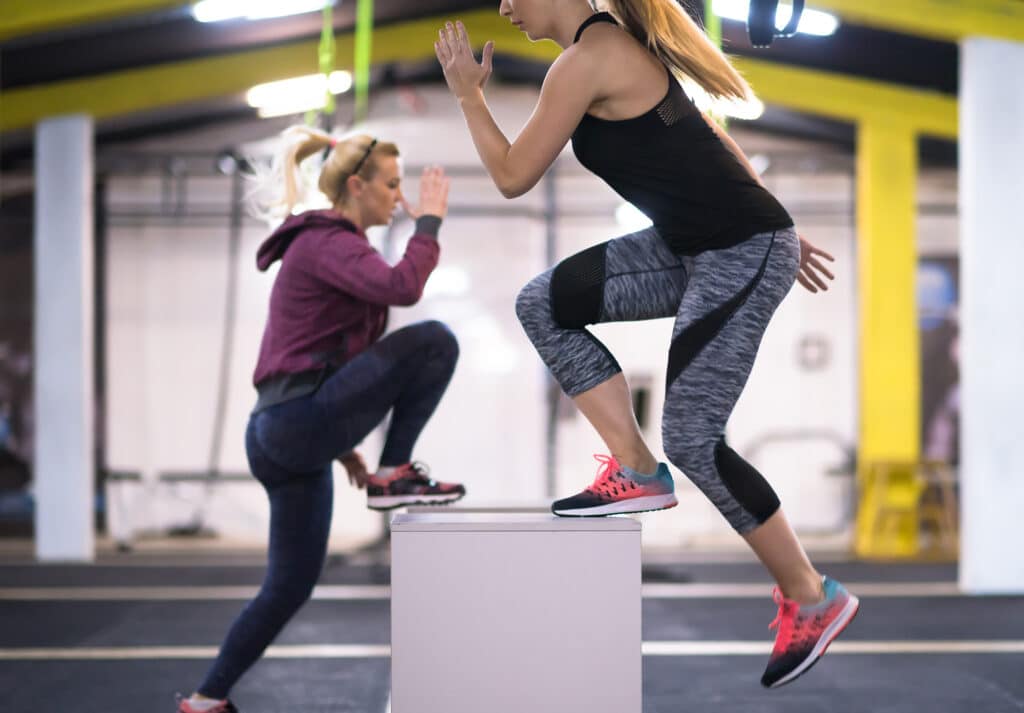
Walking lunges are highly effective in promoting better control of pelvis and knee alignment, reducing the risk of injuries while running. To perform walking lunges, take a step forward with one leg, lowering your hips until both knees are bent at a 90-degree angle. Push through the front heel to stand up and bring the back leg forward to repeat the motion.
This exercise helps runners maintain proper pelvic bone and knee alignment, essential for efficient running and injury prevention.
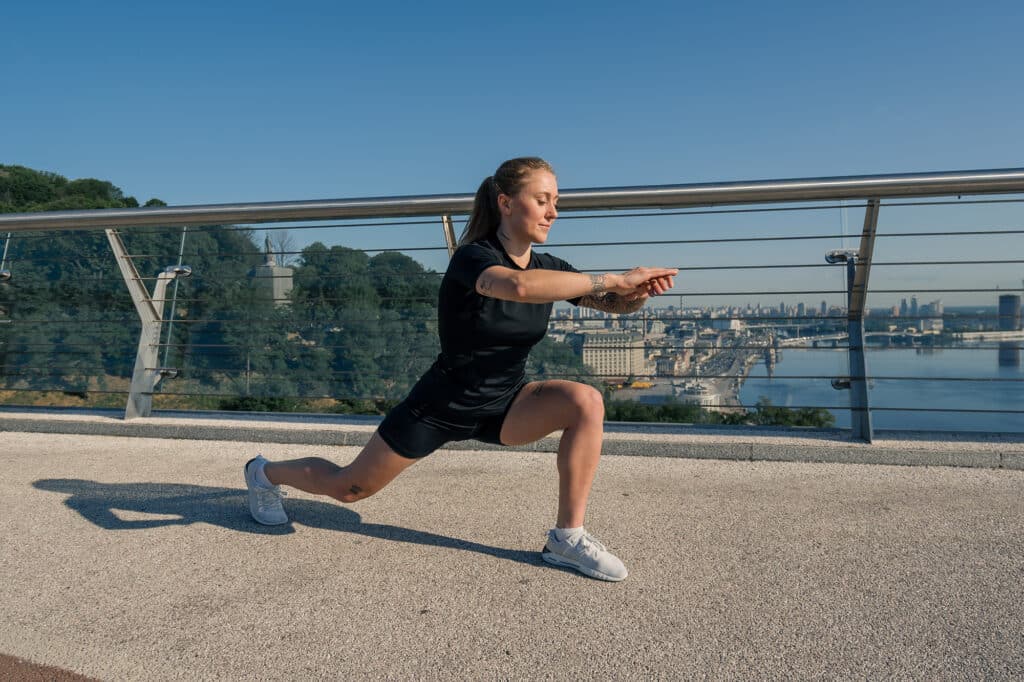
Foam rolling is a self-massage technique using a foam roller to target tight muscles and fascia, the connective tissue that surrounds muscles. This can help improve circulation, release tension, and promote better muscle recovery after exercise.
Here are some tips for incorporating foam rolling into your post-run routine:
Foam rolling can be especially beneficial for runners who have tightness or discomfort in their IT band. This long band of connective tissue runs down the outside of the thigh and can become tight and irritated from repetitive running motions. By using a foam roller to loosen up this area, runners can help prevent IT band syndrome and other related injuries.
We recommend the Fitness Mad 90cm Foam Roller. Priced at £32.99, this high-density foam roller is perfect for targeting tight muscles and preventing injuries. It also comes with a handy exercise guide to help you get the most out of your foam rolling routine.
A cheaper alternative is the EPP Foam Massage Roller at £12.99. This ultra-lightweight and robust roller is also great for targeting tight muscles and promoting muscle recovery.

A massage gun can be used for IT band pain relief, as well as for general muscle soreness and tension. This handheld device uses rapid pulses or vibrations to target specific areas of the body and promote circulation and relaxation. Similar to foam rolling, a massage gun can also help break up scar tissue and reduce inflammation in muscles.
Start by applying light pressure and gradually increase intensity if needed. Move the massage gun along the length of your IT band, focusing on any tight or tender areas. You can also use it on other areas of the body that may be contributing to your IT band pain, such as tight glutes or hamstrings.
We highly recommend the Pulseroll Pro Athlete Grade Percussion Handheld Massage Gun. Priced at £240, it is not the cheapest massage gun, but its high quality and numerous features make it worth the investment.
One of the unique features of the Pulse Roll percussion massage gun is its customisable speed settings. Unlike many other massage guns on the market, which have a limited number of speed options, the Pulse Roll offers 9 different speeds to choose from. This allows you to adjust the intensity of your massage according to your individual needs and preferences.
The Pulse Roll also comes with 5 interchangeable head attachments designed for specific areas of the body. These heads include a standard ball for larger muscle groups, a bullet head for targeted trigger point therapy, a thumb head for deep tissue work, a fork head for the spine and neck, and a flat head for broader areas like the back. Each of these attachments provides a unique massage experience to target different areas and issues in your body.
If you are after a cheaper alternative, we recommend the Pulsio Air Massage Gun. At £69.99, it is significantly cheaper, but still offers a powerful massage experience. It is small and compact, yet still comes with 4 speed settings to cater to your individual needs.

IT band pain can be a common issue for athletes and individuals who engage in physical activities that involve repetitive motion of the knee. While self-care techniques and at-home remedies can help alleviate symptoms, it is important to know when to seek professional help for IT band pain.
If you experience severe or persistent pain despite trying various self-care techniques, it is recommended to consult a healthcare professional, such as a doctor or physiotherapist. They can provide a proper diagnosis and develop an individualised treatment plan based on your specific needs.
Additionally, if your IT band pain is accompanied by other symptoms such as swelling, redness, or difficulty walking, seek medical attention immediately. These could be signs of a more serious injury
In summary, IT band syndrome is a prevalent issue among runners that can significantly impact performance and well-being. Understanding the causes, symptoms, and effective management strategies is crucial for finding relief and preventing future pain. Incorporating targeted stretches and strengthening exercises into your routine can alleviate tightness and address muscle imbalances, providing long-term relief.
Foam rollers and massage guns are excellent tools for temporary pain relief and promoting muscle recovery. Whether you’re easing post-workout tension or targeting sore muscles, these products can make a difference.
Elevate your recovery routine with these trusted options, each designed to help you feel your best. If symptoms persist, seeking professional help ensures a comprehensive recovery approach.
By taking proactive steps, you can overcome IT band pain and continue your training with confidence. Keep running strong and stay pain-free!
IT band syndrome is the condition characterised by irritation or swelling of the iliotibial band tendon, resulting from compression against the femur, which causes friction, inflammation, and pain.
The main symptoms of IT band syndrome include sharp pain on the outer side of the knee, along with a burning or aching sensation that worsens with prolonged running or cycling.
To prevent IT band pain, it is essential to incorporate proper warm-up and cool-down routines, strengthen hip abductor muscles, improve running form, gradually increase running distance, and regularly replace running shoes. Following these measures can significantly reduce the risk of injury.
Effective stretches for IT band pain relief include the standing quad stretch, seated cross-over twist, and supine figure four, as they target various muscle groups for comprehensive relief.
You should seek professional help for IT band pain if you notice significant swelling, redness, or persistent tenderness, or if the pain continues despite your treatment efforts. Consulting a physiotherapist can ensure a proper assessment and a tailored rehabilitation programme.
Join our mailing list to stay up to date with the latest UK running events, training tips, and exclusive offers on running products. Rest assured, we value your privacy and would never dream of selling your address. Sign up now…
Share this article
Are you ready to boost your running game this spring? Mark your calendars for the...
Introduction Run Less Run Faster is a scientifically-backed training method that allows experienced runners to...
Speaking of goals recently, I wanted to share a bit about my running turning point....
I didn’t get into London Marathon via the ballot. Am I too old to focus...
A heart rate zone calculator for runners is vital for optimising your training intensity. It...
Running is a fantastic way to improve your cardiovascular health, relieve stress, and build endurance....
We’re here to make sure you’re up-to-date with the latest running tips, events and product discounts – we’ve always got your back! Rest assured, we value your privacy and would never dream of selling your address.
BONUS: Sign up today and receive a FREE code for our Sub-4-Hour Marathon Plan